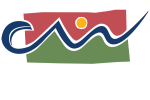Veld fire season draws to a close
Summer in the Cape Winelands is all about beating the heat. Houses are closed up against the sun, hikers and bikers get out early in the morning and finish before the heat settles in and farmers race against time to get their harvests in on time. Not to mention the feeling of cool grass under one’s bare feet.
On the other hand, for the Cape Winelands District Municipality’s Fire Services the summer months mean battling against a heat of a different kind – fighting fires. The period from 1 November to 30 April is known as fire season in the wildfire and veldfire circles. Veldfires are a persistent problem in our district that stretches over an area of 23 000 km². They often cause emergencies and at times develop into fires that have potentially disastrous outcomes.
However, it is important to note that veldfires are natural as they occur as part of the normal process of events in wildland and fynbos, and even sometimes in natural forests. They have occurred since time immemorial, caused naturally by lightning and, in the Cape mountains, by falling rocks that can cause sparks. But these natural veldfires are a problem, because they pose a risk to life, property and the environment. The closer humans move into natural spaces, the more vulnerable we become to exposing ourselves to the dangers of fire. Although mankind has been using fire for eons, the increase in population has significantly increased the risks associated with fire – human interaction is the cause of 93% of wildfires.
During the past fire season, the CWDM’s Fire Services responded to 1 117 fire incidents throughout the district (see graph below).

Some of these fires were easily managed and took only a few hours or a day or two to bring under control. But not the Jonkershoek fire. On 23 February 2021, this monster invaded our district from the Overberg side of the mountain and stretched resources to the limit while it raged for eight days.
The fire burned through 14 000 ha of mixed indigenous and alien vegetation and when it was at its worst, the firefighters and ground crews were 236 strong, assisted by 26 firefighting vehicles. A total of 14 partner organisations were involved in fighting the blaze that threatened property, orchards and lives. The aerial support teams flew a total of 90,4 hours, dropping 1 722 180 litres of water.
It was with sadness that we learned that two of the CapeNature field officers sustained injuries that required their hospitalisation. Despite the hot, windy weather that hampered firefighting activities, there were no further injuries and only a few vineyards were damaged. The fact that this potentially catastrophic fire caused zero loss of life of livelihood, is testimony to the incredible teamwork and efforts of all involved.
In the post-season period, we look at the lessons learned and address any challenges we experienced. Cape Nature and the CWDM Fire Services work together to better understand the biodiversity of our veld and the effect that climate change has on our ecosystem. Together with the Fire Protection Agency (FPA), landowners are assisted to address issues such as the maintenance of fire breaks, the removal of excessive fuel loads around structures and adequate clearing of vegetation. The FPA is also the authority from which landowners can acquire the required permits to perform controlled burns.
SUMMARIES
English
The fire season in the Cape Winelands came to an end in April. Of the 1 117 fires reported, the Jonkershoek fire will be remembered as the longest and most challenging one. Although it raged for eight days and destroyed 14 000 ha of vegetation, not a single life or property was lost – all due to the incredible efforts and unrelenting hard work of brave firefighters. The CWDM Fire Services, Cape Nature and the Fire Protection Agency use the winter months to address issues such as climate change, fire breaks and the clearing of vegetation.
Afrikaans
Die brandseisoen in die Kaapse Wynland het in April tot ’n einde gekom. Uit die 1 117 brande wat aangemeld is, sal die Jonkershoek-brand as die langste en mees uitdagende een onthou word. Hoewel dit vir agt dae gewoed en 14 000 ha plantegroei vernietig het, is nie ’n enkele lewe of eiendom verloor nie – alles te danke aan die ongelooflike pogings en onverbiddelike harde werk van die dapper brandbestryders. Die KWDM se Brandweerdienste, Cape Nature en die Brandbeskermingsvereniging gebruik die wintermaande om kwessies soos klimaatverandering, voorbrande en die wegruiming van plantegroei te hanteer.
IsiXhosa
Ixesha lemililo eCape Winelands liye lafikelela ekupheleni, ngenyanga ka-Apreli. Kwimililo eli-1 117 echaziweyo, umlilo odaleke eJonkershoek, uya kukhunjulwa njengowona mlilo othabathe elona lide ithuba, nongowona ubengumceli mngeni omkhulu. Nakubeni wavutha iintsuku ezisibhozo waza watshabalalisa utyani olungama-14 000 ee-hektare, akukho nomnye umphefumlo osutywe kukufa okanye ipropati etshabaleleyo – konke oku kusenziwa zinzame ezingathethekiyo nomsebenzi omkhulu ongatyhafiyo wamagorha angabamicimi-mililo. Iinkonzo zeeMililo zeCWDM,ezeNdalo zeKapa ne-Arhente yoKhuseleko kwiMililo, zonke zisebenzise iinyanga zobusika ukuqwalasela imiba efana nokutshintsha kwemozulu, ukwakha izithinteli zokunwenwa komlilo nokususa utyani.
Upcoming Events
| M | T | W | T | F | S | S |
|---|---|---|---|---|---|---|
| 1 | 2 | 3 | 4 | 5 | 6 | 7 |
| 8 | 9 | 10 | 11 | 12 | 13 | 14 |
| 15 | 16 | 17 | 18 | 19 | 20 | 21 |
| 22 | 23 | 24 | 25 | 26 | 27 | 28 |
| 29 | 30 | 31 | ||||


